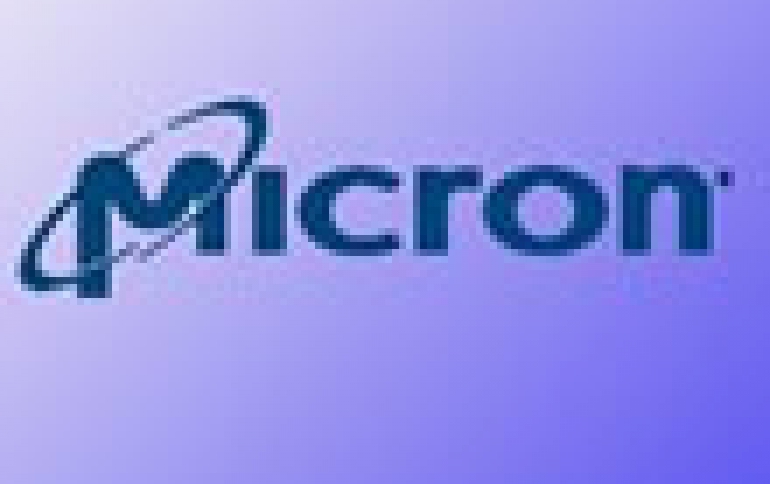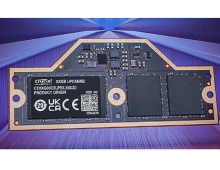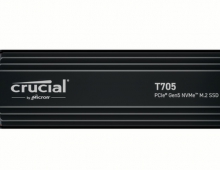
Micron To License 1x and 1y DRAM Technologies to Nanya
Micron Technology has entered into a memorandum of understanding to grant Nanya Technology an option to license Micron 1x and 1y DRAM technologies. This new license agreement is in addition to Micron's existing license agreement for 20 nanometer (nm) technology with Nanya. Under the license agreements contemplated by the memorandum, in each case when Nanya exercises its option to license the 1x or 1y technology and subject to the satisfaction of certain conditions, Micron will receive an equity stake in Nanya and also royalties based on revenues from products implementing the technology - subject to an agreed cap. The new licenses are limited to a specific facility footprint, are subject to an overall quarterly cap on production, are not transferrable and terminate upon a change of control of Nanya. The new licenses do not impact the existing 20nm DRAM technology agreement between Micron and Nanya.
The memorandum of understanding provides an additional 60-day period for Micron and Nanya to enter into definitive agreements with further specified mechanics and details of the licenses.
Seperately, Micron and Inotera Memories announced the signing of an agreement for Micron to acquire Inotera's remaining shares for consideration worth 30 New Taiwan Dollars per share or approximately $0.92 USD per share. Micron currently owns approximately 33 percent of Inotera. This represents a transaction value of approximately $3.2 billion, net of cash and debt at Inotera, to acquire the remaining equity.
"We believe this is a compelling combination for both companies' shareholders and employees," said Micron CEO Mark Durcan. "The acquisition is the culmination of a highly successful seven year partnership with Inotera. It enables Micron to realize the full financial and operational benefit of Inotera's operations and provides a strong future for Inotera and its employees, who will become an even more critical part of Micron's success."
Today, Micron purchases 100 percent of Inotera's DRAM output, representing approximately 35 percent of Micron's total DRAM production. Inotera is expected to be fully deployed on Micron's 20 nanometer technology by the middle of 2016. Inotera had net cash of approximately $0.9 billion U.S dollars as of its latest fiscal quarter ending September 30, 2015.
The latest report from DRAMeXchange, a division of TrendForce, places Micron third in market share for DRAM based on revenue. The U.S. memory maker is behind the two South Korean rivals SK Hynix, which sits at the No. 2 spot with an estimated 28% of the DRAM market, and Samsung, which tops the ranking with around 46.7%. Taiwanese memory maker Nanya Technology is ranked No. 4 with a mere 3% of the market share. Both Inotera and Nanya are partially owned by Formosa Plastics Group.
Micron’s current total DRAM capacity is about 310,000 wafers per month. Production facilities obtained by Micron in its acquisition of Elpida supply about 100,000 wafers to the total capacity. Another 80,000 wafers are provided by the added capacity from the Rexchip acquisition. As a dedicated server and PC DRAM supplier for Micron, Inotera provides about 100,000 wafers to its partner’s total DRAM capacity.
Presently, Formosa Plastics and Micron are the largest shareholders in Inotera with stakes nearly equal in size. Formosa Plastics has 32% (24% are held under its subsidiary Nanya Technology) and Micron owns about 32.7%. However, all of Inotera’s manufacturing technologies are from Micron.
Micron’s motives behind the acquisition is more complex and multi-faceted. From a long-term perspective, the changes that were made to pricing agreement between Micron and Inotera earlier this year would have severely squeezed the latter’s margins, resulting in an inevitable conflict of interests between the two companies. "China is already in full swing to build a domestic semiconductor sector, with DRAM as the cornerstone," said Avril Wu, research director of DRAMeXchange. "Micron would be in more of a dilemma if its partnership with Inotera started to fall apart since the Taiwanese government are beginning to take more relaxed stance towards Chinese investments in the local semiconductor companies.” There is a possibility that the Chinese will be able to obtain Micron’s technologies and production capabilities by taking over Inotera. Even if Inotera only represents 30% of U.S. memory maker’s DRAM capacity, it is still too risky. By acquiring the whole company, Micron will not only eliminate this political and business uncertainty but will also have complete control over any collaboration with its new subsidiary foundry.





















